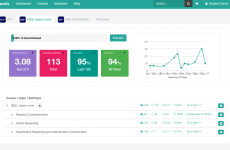On Tuesday, voters in some areas of Greater Houston will decide whether to accept their school districts’ bond proposals. Bonds – securities issued by school districts with taxpayer consent, to be paid back with interest using tax revenue – are a common means of funding school facilities projects throughout the US. If passed, the $748.2 million Katy ISD bond, the $484.2 million Fort Bend ISD bond, and the $240.6 million Lamar CISD bond will fund campus construction, renovation, and other development projects to help the districts provide for their growing student populations.
The $7498.2 million Katy ISD bond proposal is the largest and most controversial of the three. Nearly 50% of the proposed $748.2 million would be allotted to the construction of 6 new schools; nearly 30% would be allotted to renovating, expanding, and updating a majority of the district’s campuses. The bond also provides for the building of two new “student activities facilities,” an Agricultural Sciences Center and a new stadium next to the existing Rhodes Stadium. The impact on taxpayers would be a projected 0-0.5 cent tax rate increase, according to the district’s bond committee.
Katy currently serves approximately 67,500 students across 59 K-12 campuses; according to district analysts, its student population is increasing at a rate of approximately 3,000 per year, and it is projected to reach 80,000 by 2018. A number of schools in the district, particularly high schools, have student populations well above their design capacity. 46 of the district’s 59 campuses have at least 1 portable classroom supplementing their facilities; 28 have 5 or more portable classrooms. There are 292 portable classrooms on academic campuses in the district.
This is the second year in a row that Katy ISD has put a bond on the ballot. Last November, a $99 million bond providing for an Agricultural Sciences Center, a STEM center, and a new stadium failed to pass – 54% of voters rejected it. Some of the bond’s most vocal opponents in 2013 were members of Katy LiberTea, a far-right anti-tax organization, who expressed concern about potential tax hikes despite the bond committee’s projections that the 2013 bond would not have required any increase in taxes. Unsurprisingly, with the current proposal’s provision for a tax rate increase up to 0.5 cents, the group’s opposition to the bond has not diminished. Another group, Put Katy Kids First, has also been outspoken against the bond and raised money to oppose it through a PAC. Some community members have expressed opposition to the current bond proposal because they feel it allows for excessive spending, while others object to the allocation of bond money to a new stadium, as opposed to other needs which they perceive to be more pressing. Still others simply feel the district should not be $748.2 million in debt.
The current Katy ISD bond proposal has been constructed with an eye towards assuaging some of the concerns that voters had last year. More community members have been included on the bond committee, and committee members and district staff have made a number of presentations to the public explaining the need for and benefits of various aspects of the bond package. In deference to community concerns, the stadium project has been scaled down, and the STEM Center has been omitted from the proposition entirely; and all “student activities facilities” together comprise just over 10% of the total package. The current bond package focuses on facilities to meet the district’s growth needs, a fact which has been heavily emphasized in the bond committee’s publications. In addition to the changes in priorities and emphasis on meeting students’ needs, the bond proposal’s odds have also been helped by the efforts of the PAC One Katy, which has raised more than $100,000 for pro-bond advertising.
The Katy ISD bond continues to be the subject of fierce debate, and it remains unclear whether it will pass this year. District officials and committee members have begun considering alternative measures to deal with overcrowding in the event that it fails to pass. However, they have made it clear that they feel the bond is the only truly viable solution, and anything short of it would be a stopgap measure at best.
The Fort Bend ISD bond has been the subject of comparatively less debate, though it still has its opponents. Approximately 75% of the proposed $484.2 million bond would be allocated to school construction and renovation, with the remaining 25% divided among land purchases, security, technology, and transportation. The construction projects will include four new elementary schools, additions to eight elementary schools and one middle school, and expansion of career and technical education (CTE) facilities. According to district officials, projections indicate no tax rate increase would be needed to fund the bond package.
Fort Bend ISD serves approximately 72,000 students across 74 K-12 campuses, and the district’s student body is projected to exceed 77,000 by 2019. The district has 168 portable buildings supplementing its academic facilities.
The current bond proposal will be phase one of a two-phase plan to prepare all of the district’s facilities for the expanding student population. Phase two will be introduced as a separate bond package in approximately 2017. Both packages will fund projects outlined in the district’s capital plan, a ten-year strategy for growth.
In Fort Bend, the proponents of the bond hold that it is the best way to fund the necessary facilities upgrades needed to deal with the district’s growing population. The bond’s opponents generally agree that such facilities are needed and that a bond would be an optimal way to fund them, but they may object to certain non-facilities projects the bond will also fund, such as cameras on school buses and technological upgrades. Some also feel that it is too soon for a bond election – they would prefer to have more time for concrete planning, particularly regarding school zones and feeder patterns and how they will be affected by the new campuses.
The $240.6 million Lamar CISD bond has also been the subject of debate. 60% of the bond package would be allocated for the building of new schools, specifically five elementary schools and one middle school. The remaining 40% would be spread out among land purchases, transportation, and miscellaneous facilities upgrades. The bond is projected to require a 4-cent tax rate increase, which would be added on top of the 1.5-cent tax rate increase being implemented in the district this year to pay off an earlier bond.
The bond package approved by the Lamar CISD board differs somewhat from what was recommended by the bond committee – notably, it includes one fewer elementary school than the original plan, and it includes funding for high school practice swimming pools, which was not a component of the original proposal. District officials have stated that the five planned elementary schools will be sufficient for current needs, but the pools have been a lightning rod for contention. In addition to the pools, some bond opponents have also cited timing as a factor – they feel the proposal is being brought to the vote too hastily, with insufficient time to find more cost-effective solutions and eliminate extraneous projects.
District officials who support the bond argue that it is a necessary component of the district’s strategy for dealing with growth; Lamar CISD is currently operating on a three-year bond cycle, under which a bond is brought to vote approximately every three years, on an ongoing basis, to accommodate growth. Lamar currently serves more than 28,000 students across 38 K-12 campuses, and as residential areas are rapidly developed within the district’s feeder zone, the student population is projected to reach 45,000 by 2023.
If you live within the Katy, Fort Bend, or Lamar school district, we encourage you to make an informed decision and cast your vote this Tuesday.
Feature photo courtesy of fuelingkaty.com.

























